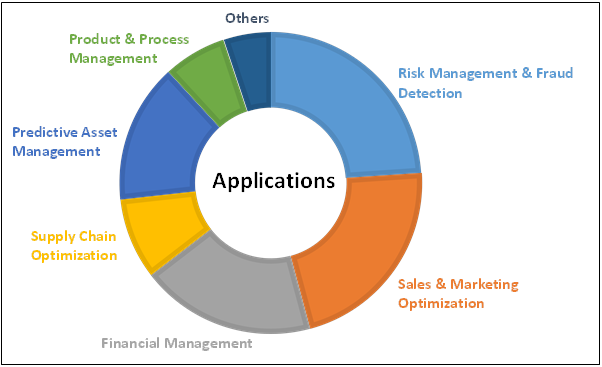The in-memory analytics market is gaining traction and is being adopted by various verticals, as organizations are improvising on their software adopted for optimal allocation of resources and improving their real-time performance analysis.
In-memory analytics allows executives to make faster strategic business decisions by making use of in-memory technologies. Technological advancements in computing power and the growing demand for self-service BI tools have also supplemented to the in-memory analytics market’s growth.
Organizations are using In-Memory Analytics for predictive asset management to proactively manage risks. The early identification of the potential concerns help organizations in the cost-effective deployment of the limited resources, enhance quality, and maximize equipment uptime, which ultimately is expected to result in improving customer satisfaction.

Ask for PDF Brochure @ https://tinyurl.com/y97vxjy8
Key Applications Solutions for In-Memory Analytics Market are as follows :-
-
Risk Management & Fraud Detection
Risk management and fraud detection mainly cover the enterprise risk associated with financial risk, operations risk, or risk associated with an organization’s network efficiency, and preventing company from both internal fraud activities and external fraud activities.
-
Sales & Marketing Optimization
In-memory analytics software implemented sales and marketing optimization application assists companies in optimizing marketing spend, not in the traditional sense of applying a marketing mix model, but in delivering optimization through strategy and efficiency at the marketing process level.
- Financial Management
The financial management application implemented in in-memory analytics software assists companies of all sizes in the automation and transformation of their financial planning, reporting, and analysis processes.
- Supply Chain Optimization
Supply chain is a complete arrangement of organizations, individuals, resources, information, data, and assets necessary for moving products and services from providers to the end users. Activities in the supply chain transform raw materials into finished products and finally deliver these to customers.
- Predictive Asset Management
Assets produce a wide range of operational data which if analyzed properly can lend insight into life-cycle, efficiency, and performance. The asset management integrated platform assists users in managing physical assets and tracking equipment performance. It also provides service assurance by enabling real-time alerts and providing automated corrective actions.
- Product & Process Management
In-memory analytics plays an important role in product and process management. In-memory analytics capabilities, such as real-time data analysis, transactional processing analytics, and visualization tools help users enhance business processes with improvements in overall product and process data quality and analysis.